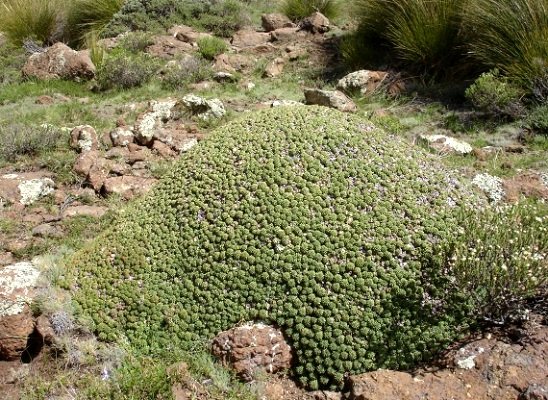Euphorbia clavarioides subsp. clavarioides

Euphorbia clavarioides subsp. clavarioides has developed so many stems in this old plant that the centre bulges from growth in the compactly positioned erect stems. Outer stems are pushed sideways by new ones added in the centre. This causes the dome shape, as outer stems angled sideways achieve diminishing heights further from the centre. Individual stems grow from a thick main stem body, a caudex that is underground, tapering down into a deep taproot.
The smooth cushion formed by the evenly growing stems forms an unusual and graceful structure on the ground. Tiny yellow cyathia and short-lived leaves appear on stem tips, shown in another photo in this Album.
The plant is commonly known in Afrikaans as the grootvingerpol (large finger tuft) or melkpol (milk tuft). As is common with Euphorbia, milky latex appears where the plant is damaged.
There is a second subspecies, viz. E. clavarioides subsp. truncata, seen in Gauteng grassland (Van Wyk and Malan, 1997; iSpot).

